Continuing Thomas Brodie’s Beyond the Quest for the Historical Jesus: Memoir of a Discovery
Part III
The Third Revolution: Literary Art, Including Form/Genre
Becoming aware of how biblical writers redesigned their materials into a new work of art
Chapter 8
.
Dramatic happenings in the next room
Old Testament studies were much more action-packed in the 1970s than those of the New Testament.
- 1974: Thomas Thompson, The Historicity of the Patriarchal Narratives: The Quest for the Historical Abraham
- 1975: John Van Seters, Abraham in History and Tradition
With these two publications there was little ground left for taking anything or anyone in Genesis as being historical.
- 1986: J. Maxwell Miller and John H. Hayes, A History of Ancient Israel and Judah
With this work everything from Genesis to Joshua was rendered suspect. Even Joshua was thus more validly classified with the “former Prophets” than with “history”. But the Book of Judges was said to be historical to the extent that its “jumbled-looking sequence and style” appeared to indicate that it was a collation of oral traditions.
What are we going to do with St John?
Meanwhile, back in St Louis, Missouri, Thomas Brodie was not getting very far in his search for the Gospel of John’s sources. Recall in our previous post that Brodie was struggling with this question since 1982, particularly through the window John 9 (the healing of the man born blind) and its apparent view out to Mark’s accounts of healings of the blind (Mark 8.11-9.8). Brodie was becoming increasingly aware that discerning John’s sources was a question that was inseparable from John’s meaning, and the meaning of John 9 could not be separated from the rest of the Gospel. The meaning of the Gospel of John was also bound up in the narrative spanning Jesus’ ministry out over three years (as opposed to Matthew, Mark and Luke’s one-year ministry). The explanations to all of these questions could not be summed up in a single article.
Then one day I woke up and realized I was being drawn into writing a commentary! (Beyond, p. 80)
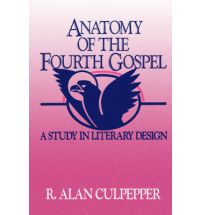 Brodie did not clearly recognize it at the time, but what at this point he was entering a new, the third, revolution of his understanding. Others were also beginning to develop these new ideas to some extent. One landmark example was Alan Culpepper’s Anatomy of the Fourth Gospel (1983). Effectively for the first time the Gospel was being studied for its qualities as a finished literary product. This departed from earlier studies that sought to discern its various parts that had presumably been stitched together over time and to understand their respective histories.
Brodie did not clearly recognize it at the time, but what at this point he was entering a new, the third, revolution of his understanding. Others were also beginning to develop these new ideas to some extent. One landmark example was Alan Culpepper’s Anatomy of the Fourth Gospel (1983). Effectively for the first time the Gospel was being studied for its qualities as a finished literary product. This departed from earlier studies that sought to discern its various parts that had presumably been stitched together over time and to understand their respective histories.
If I were to deal responsibly with John’s Gospel, I would have to take account of both aspects — the sources that underlie it, insofar as they can be identified, and also the completed body, all the features of ancient rhetorical art, especially its basic form (is it . . . history or story?). (Beyond, p. 81)
To step outside Beyond the Quest for a moment, I might point out that later when Brodie finally published The Quest for the Origins of John’s Gospel in 1993 he devoted a chapter to comparing John 9 with the Markan section on healings of blind, pointing out that as the centre episode in John’s gospel it was indeed the window into the meaning of the entire Gospel
A new tool is discovered
It is one thing to establish a principle and quite another to apply it fully. Hermann Gunkel had long before shown the importance of identifying ancient literary forms correctly. Form-criticism had been focused on small units within texts.
But now, in the 1970s and 1980s, the gap was being bridged. The emerging awareness brought attention to literary features further. As never before, literary criticism was seeking to identify not only the basic form (genre/nature) of a biblical writing but, again, all the specific features that held it together and shaped it. Modern literary criticism had arrived. (Beyond, p. 81)
Not all scholars welcomed this new tool. Joseph Fitzmyer was one who defiantly declared his rejection of it in 1998. (Some readers may be aware that I have pointed out that our friend James McGrath even today has flatly rejected the idea that literary criticism has any relevance to our study of the Gospels in order to learn the history to which they supposedly allude.)
The reason some scholars have rejected literary criticism is, Brodie suggests, because some of it can be very theoretical, abstract and of doubtful relevance.
But literary criticism at its best was here to stay — both as a new way of searching for sources, and a new sense of how to look for a book’s art (its identity/form/genre and also its specific features). In the final decades of the twentieth century these two kinds of literary criticism gained momentum in biblical studies, and certainly for me the recognition of their depth constituted revolutions. (Beyond, p. 81)
Literary criticism in action
Take the two creation accounts at the beginning of Genesis: Gen. 1:1 to 2:4a and Gen. 2:4b to 24. In the first, man is created last; in the second, he is the first of the living creatures to be formed. Do we have here an instance of very clumsy editing? (This is what Jean Astruc had led generations of scholars to believe.) The disjointed nature of the text pointed to different sources clumsily stitched together.
[B]ut when looked at more closely, when seen from another angle, they constitute an extraordinary unity; they complement one another deeply . . . . In other words, Genesis begins to emerge not as muddled, but as chiselled with supreme care. I will come back to Genesis later.
What was instructive for someone like me who had swallowed the Astruc theory, was that at last, through literary criticism, through appreciation of literary art, the unity and purposefulness of Genesis became recognizable. (Beyond, p. 82)
We know how to interpret James Joyce’s Ulysses and not to mistake spelling anomalies for illiteracy. We know how to interpret Picasso’s strange faces and do not think that he lacked talent.
But for several reasons, including at times a modern sense of superiority, the superb artistry of the ancient biblical writers had not been recognized. . . . .
In studying John, it was impossible to avoid the issue of literary artistry. Was this text as jumbled as it looked, or was its curious shape — for instance, its gaps and contradictions — trying to say something? (Beyond, p. 82)
Alter alters everything
I mentioned above the influence of Culpepper on leading Brodie to read the Gospel of John as a literary unity. The major influence in this direction, however, was
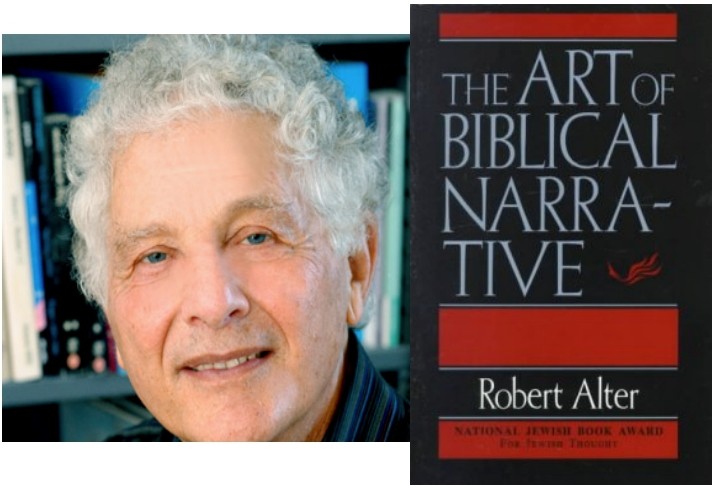
Most of us are aware of the oddities in the text of the Jewish Scriptures or Old Testament. Certain stories are repeated with variations or even contradictions (e.g. the two accounts of the rise of David to kingship). Oddities, repetitions, breaks, contradictions abound. Is all of this the result of clumsy editing (“redaction”) in an attempt to quilt together diverse source material or, as Alter suggested, did it point to something else?
Or did the biblical author(s) have (in Alter’s words) a “certain notion of unity rather different from our own”? — a phrase that hit Brodie’s mind “with clanging reverberations”.
If Alter’s analysis of the Hebrew scriptures was any guide, then could it be possible that all the strange breaks and twists in the Gospel of John had nothing to do with lost sources that were clumsily tagged one after the other? Or were they, as Alter discerned of this sort of apparent confusion in the Old Testament, trying to say something?
Alter not only startled me — he provoked a process of further reading: literary criticism, rhetorical criticism, authors such as Luis Alonso Schökel, Carol Newsom, Meir Sternberg, Jan Fokkelman, Phyllis Trible, Vernon Robbins, and Gail O’Day.
Suddenly a mass of data in John, formerly assigned to a vague mixture of oral tradition, lost sources, and elusive stages of redaction, began to fall into place as the work of one accomplished writer. Strange syntax made more sense as artistry rather than as poor editing (‘redaction’).
C.K. Barrett’s view of John as dialectical became clearer in light of Carol Newsom’s work on the dialogical nature of biblical narrative. And the importance ancient writers attached to a work’s beginning, middle and end helped explain many elements, including why at these three points Mark is most obviously related to the Elijah-Elisha narrative, and John in turn is most obviously related to Mark. (Beyond, p. 83)
The veil lifts from John
So Brodie wrote his commentary on the Gospel of John.
He saw John as the work of a single author and the work itself as a unified and coherent text. He saw that text operating at three levels: as a biography of Jesus, a reflection of early church history, and as evocative of the human stages of believing.
Even if the gospel used dozens of sources, Brodie concluded that they had all been masterfully integrated into a coherent work of artistry and theology.
Even the prologue’s strange descent “from soaring poetry to mundane prose” made sense as a conveyer of the theme of the divine Word becoming flesh on earth.
The three-year ministry was found to portray the different stages of the Spirit-filled life, and this was a variation on the themes encapsulated in the central chapter 9 (the healing of the man born blind.)
The question of the double ending:
- 20:30-31
- 21:24-25
fell into place as part of a choreographed three-part conclusion:
- 19:35-37
- 20:30-31
- 21:24-25
- 19:35 The man who saw it has given testimony, and his testimony is true. He knows that he tells the truth, and he testifies so that you also may believe. 36 These things happened so that the scripture would be fulfilled: “Not one of his bones will be broken,”37 and, as another scripture says, “They will look on the one they have pierced.”
- 20:30 Jesus performed many other signs in the presence of his disciples, which are not recorded in this book. 31 But these are written that you may believe[a] that Jesus is the Messiah, the Son of God, and that by believing you may have life in his name.
- 21:24 This is the disciple who testifies to these things and who wrote them down. We know that his testimony is true. 25 Jesus did many other things as well. If every one of them were written down, I suppose that even the whole world would not have room for the books that would be written.
(Proto-Luke had given a partial precedent for this with its triple “it seemed good” and its references to writing in the prologue of Luke 1:1-4.)
The Gospel’s conclusion forms a “startling” inclusio paired with the opening of the Gospel:
Compare 21:25
Jesus did many other things as well. If every one of them were written down, I suppose that even the whole world would not have room for the books that would be written.
with 1:1-3
In the beginning was the Word, and the Word was with God, and the Word was God. 2 He was with God in the beginning. 3 Through him all things were made; without him nothing was made that has been made.
and note the way the “word/s” of Jesus fills the entire earth at the beginning and end.
The world-surpassing Word (1:1-3) has generated the equivalent of world-surpassing writings (21:25).
Thus the final verse contains at least two literary features, balance (or inclusion) and hyperbole, but these features are not superficial decorations . They build towards one of the Gospel’s primary aims — imparting a sense of wonder, a sense reflected in the final suggestion of being left guessing (omai, ‘I suppose/think’). (Beyond, p. 84)
Thus Brodie came to see the Gospel of John as a tightly woven literary unity with every sentence carefully crafted to that end. (I am reminded here of another study that points in the same direction: M.J.J. Menken’s The Numerical Literary Techniques in John.)
The story’s meaning is so clearly the primary reason for the gospel that there is simply no need (I would say no room) to add further explanations that seek to make it a report of oral histories about Jesus.
The work that was eventually produced was The Gospel According to John: A Literary and Theological Commentary (1993).
Finally finding that Markan source!
Brodie then returned to John’s sources. Finally he discovered the key to the way John had used Mark. Instead of using each of Mark’s six scenes in each one of his own (John’s) six scenes, John had scattered Mark, subdividing each scene across several of his own. Thirty years earlier Raymond Brown had identified this phenomenon:
Incidents that are Units in the Synoptic Gospels but Dispersed in St John (1961).
Brown at that time had not pursued the literary implications of this. He wrote at a time when historical criticism was of primary interest and oral tradition was the ever-ready fall-back.
So the same year (1993) would see the publication of The Quest for the Origins of John’s Gospel (1993).
How strange!
The outcome was anticlimactic. Scarcely any reviewer attempted to say whether the test case (that John 9 was sourced from Mark 8.11–9.8) provided a valid argument. Apparently the material was too strange and time-consuming. (Beyond, p. 85)
Brodie tells us that he learned from a Myers Briggs psychological test that, of the four key aspects of mind — Sense, Intuition, Thinking, Feeling — he was “heavily disproportionate” in the Intuition department.
For the first time, I began to understand why what seemed clear to me — for instance, in comparing texts — was not at all clear to those whose primary strength was in one of the other three qualities, especially in Sense, in other words, in gathering sense data such as measurable facts and details. (Beyond, p. 85)
Brodie compares himself with another “Intuition-biased” person who also made significant contributions in another area, and has no misgivings about his strength in this area. Nor does he mind others who do not rely upon intuition.
But he does express concern over those who will not take the time to examine the evidence, who will not allow themselves the time and patience to engage a world that at first seems strange and threatening.
Returning to roots and finding new growth
In September 1991 Brodie returned to the place of his former studies, Tallaght, Dublin, for a sabbatical year.
There he completed, in a careful academic presentation, a work he had begun in 1973 in Jerusalem — the dependence of part of Matthew upon part of Deuteronomy: “Fish, Temple Tithe, and Remission: The God-based Generosity of Deuteronomy 14-15 as One Component of the Community Discourse (Matt 17:22-18:35)”. This was published in the Revue Biblique 99 (1992).

Neil Godfrey
Latest posts by Neil Godfrey (see all)
- No Evidence Cyrus allowed the Jews to Return - 2024-04-22 03:59:17 GMT+0000
- Comparing Samaria and Judah/Yehud – and their religion – in Persian Times - 2024-04-20 07:15:59 GMT+0000
- Samaria in the Persian Period - 2024-04-15 11:49:57 GMT+0000
If you enjoyed this post, please consider donating to Vridar. Thanks!

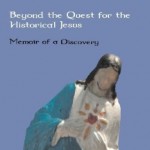
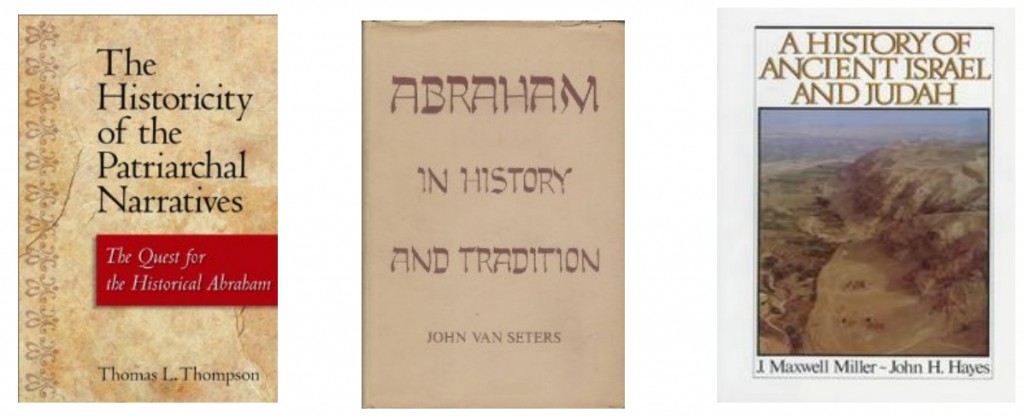
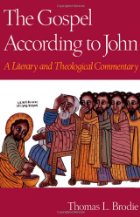
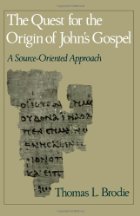
Having withdrawal symptoms, need a new post right away or I’ll be forced to go to the matrix-adone clinic for a false fix.
on the way back here, i think. i’ve found a break kind of relaxing. still reading heaps, but i want to read more before i resume posting. blame tim. he’s got nothing but work commitments as an excuse . . . .
On the one hand, when the real world intrudes and steals all my brainpower, I don’t have enough left over for my favorite hobby (NT studies). But on the other hand, when I do have time (and I don’t feel like sleeping or drinking Scotch), I can study and write on whatever I want. That’s a great luxury.